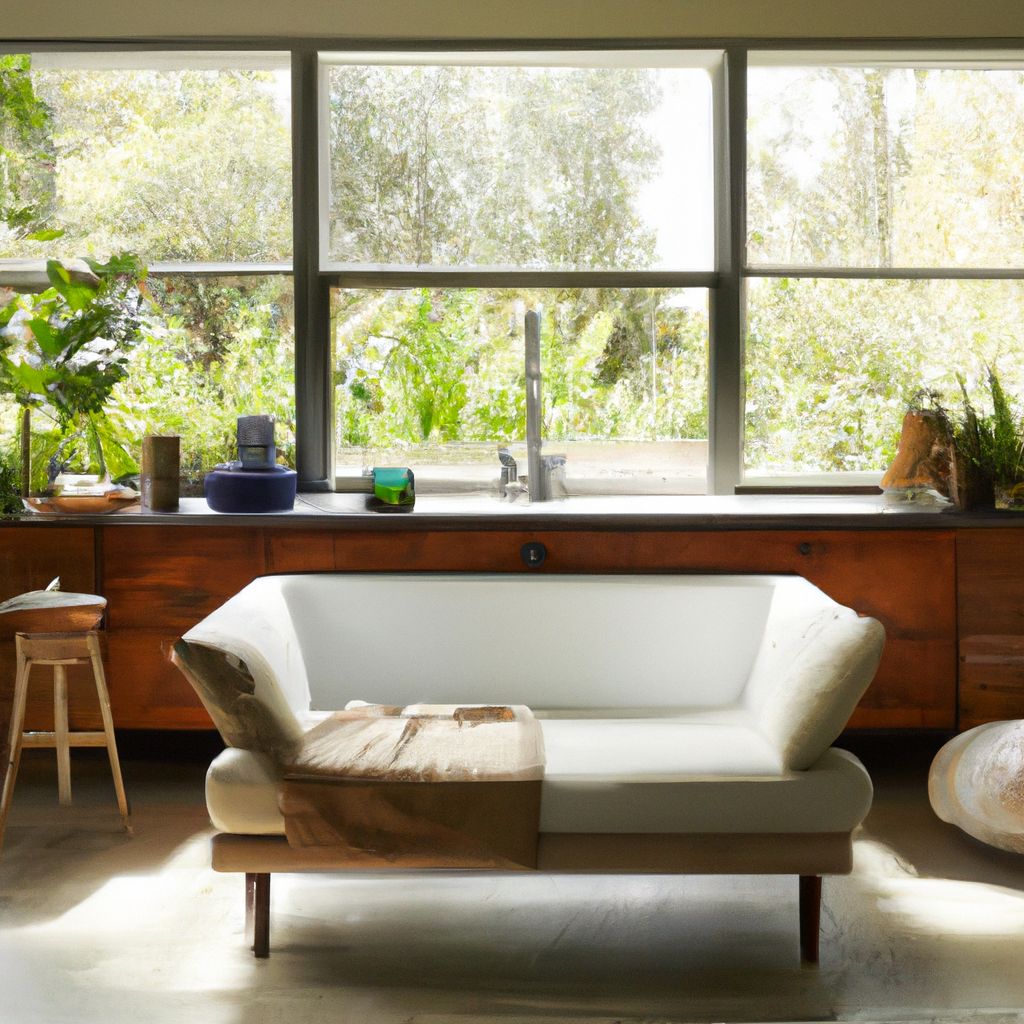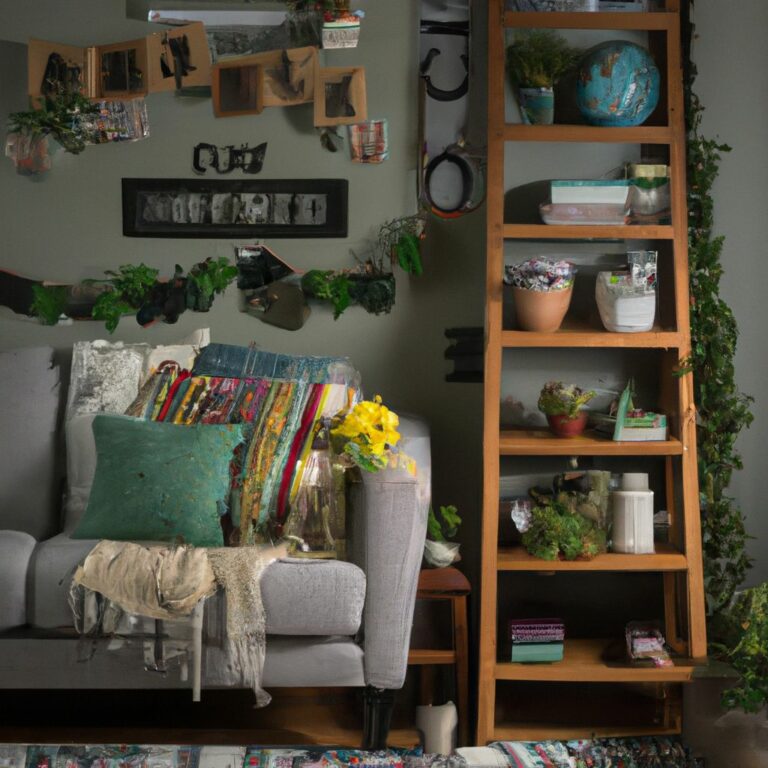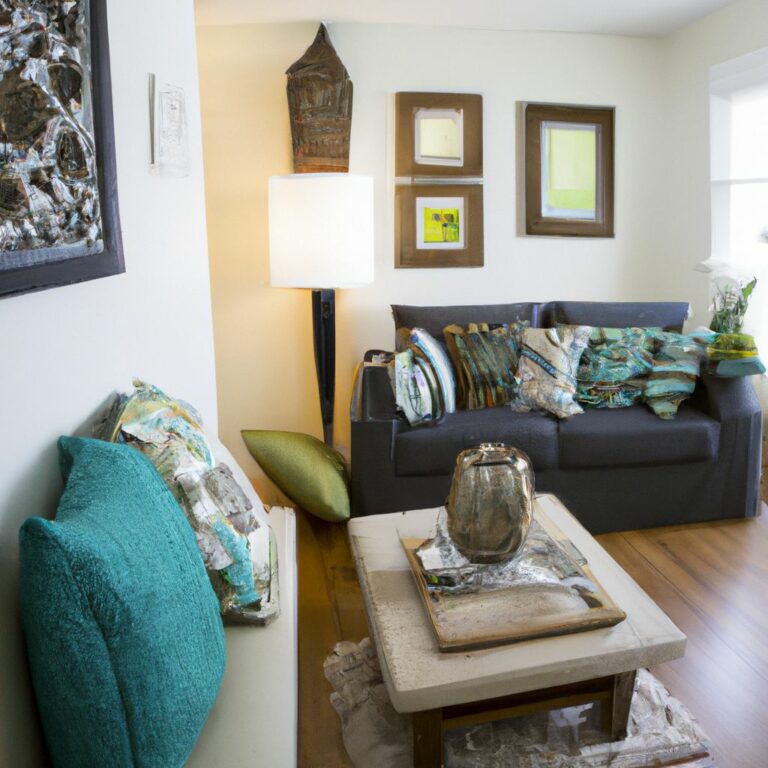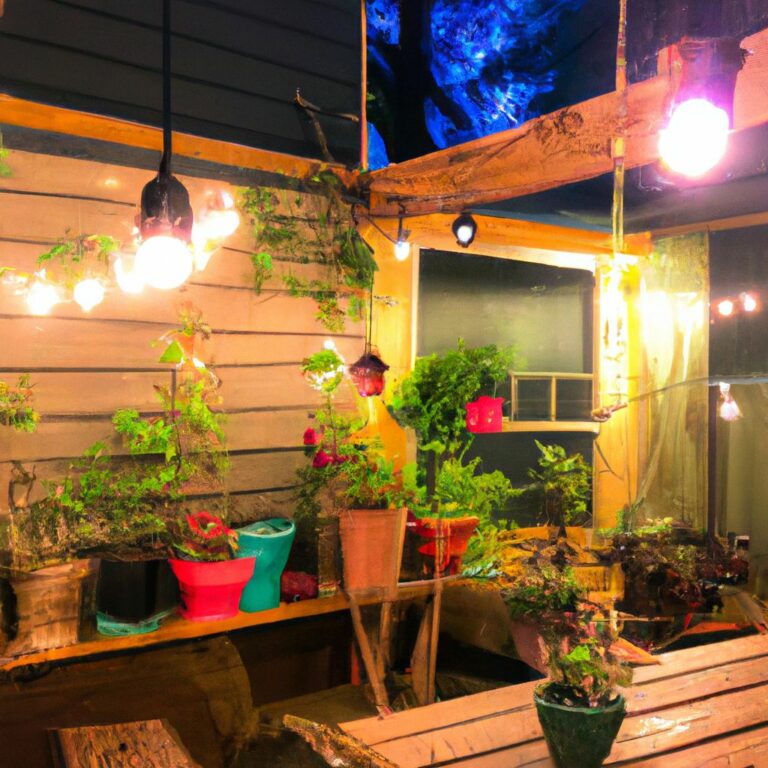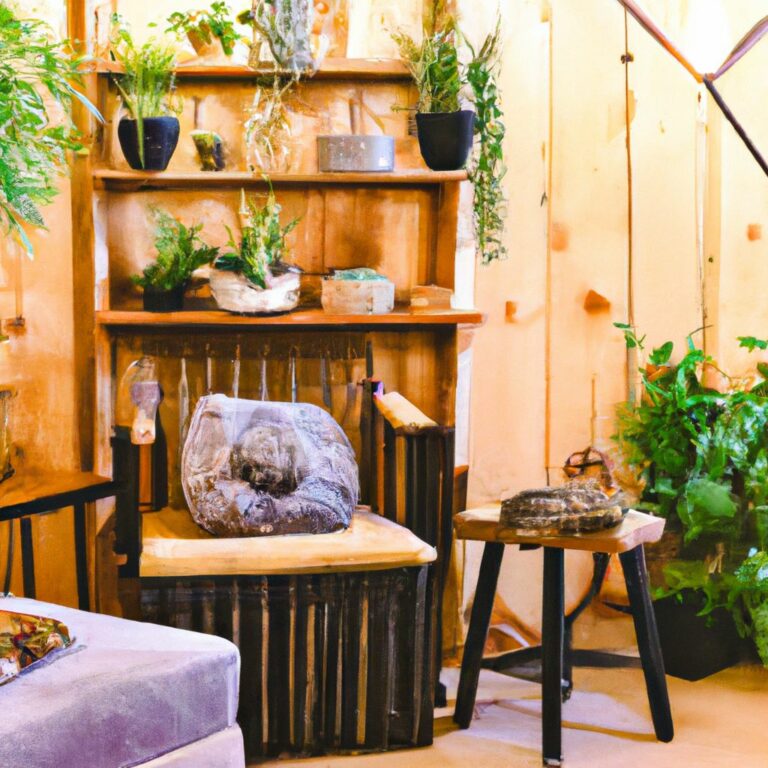Introduction: Creating a Sustainable Home
Create a sustainable home by incorporating eco-friendly decor ideas. Natural materials like bamboo furniture or organic cotton textiles are great for beautifying your space and minimizing your carbon footprint. Furthermore, LED bulbs and smart home systems can help regulate energy usage, while still providing comfort.
Indoor plants can improve air quality by filtering harmful toxins. Choose low-maintenance plants, like spider plants or peace lilies, that thrive indoors with minimal care. Plus, opt for zero or low-VOC paints to ensure healthier indoor air quality without compromising aesthetic appeal. So, go green and invite nature indoors!
Incorporating Natural Materials
Incorporate nature into your home decor for a warm and elegant touch! Wood, stone, wicker, jute, and bamboo are all natural materials that can add unique textures and colors. Wooden furniture such as chairs, tables, and shelves bring a timeless beauty. Stone elements, like marble countertops or granite flooring, provide durability and an earthy feel. Wicker furniture and jute accessories bring a rustic ambience. Bamboo is a versatile material that can be used for flooring, blinds, and wall coverings.
Bringing nature inside will not only promote environmental responsibility, but it also creates a soothing environment. Just like Sarah, who redecorated her living room with natural materials. She chose wooden bookshelves and a stone fireplace mantel, along with wicker baskets and bamboo blinds. These simple changes transformed her space into a cozy yet elegant retreat, connecting her to the natural world.
Energy-Efficient Lighting Solutions
Transform your home into an energy-efficient abode with these unique lighting solutions! LED lights use up to 75% less energy than traditional bulbs, reducing electricity bills and carbon emissions. Motion sensor switches ensure lights are turned off when not in use. Natural light creates a well-lit and inviting space. Dimmer switches let you adjust brightness levels, saving energy and setting the mood. Task lighting illuminates only used areas, avoiding energy wastage. Smart lighting systems enable remote control and scheduling.
Enhance these tips even further with light sensors, reflective materials, and solar-powered outdoor lights. This way, you can enjoy cost savings and help preserve the environment. Don’t forget to add a touch of green with eco-friendly paints and wall coverings – being eco-friendly doesn’t mean you have to sacrifice style!
Eco-Friendly Paint and Wall Coverings
Choosing paint and wall coverings for your home is not just about finding the perfect shade or pattern. It’s also important to think of the environment. Eco-friendly options can keep your home looking stylish while minimizing harm to the planet.
Here are 5 points to consider:
- Low-VOC Paint: Traditional paint often contains VOCs which can release chemicals into the air, bad for both people and the planet. Look for low-VOC or zero-VOC paints, using water instead of solvents.
- Natural Wallpapers: Avoid synthetic materials like vinyl, which can contribute to landfill waste. Look for wallpapers made from natural fibers such as hemp, bamboo, or grasscloth as they are renewable and biodegradable.
- Recycled Materials: Use wall coverings made from recycled materials, such as reclaimed wood or glass tiles. This reduces demand for new resources and helps divert waste.
- Clay-based Paints: Clay-based paints are an eco-friendly choice. Made from clay, chalk, minerals, and water without toxic additives. They have a low impact and create a unique matte finish.
- Sustainable Production Methods: Look for brands that prioritize sustainable production. This includes renewable energy sources, reducing water consumption, and ethical labor practices.
Eco-friendly paint and wall coverings not only benefit the environment but also contribute to a healthier living space. Make the switch and create a home that reflects your values. It’s time to make a positive impact on both your living environment and the planet.
Sustainable Furniture and Accessories
Sustainable furniture and accessories can be a great way to make a positive impact on the environment. Look for eco-friendly materials like bamboo, reclaimed wood, and natural fibers. Accessorize with recycled glass, upcycled textiles, and organic cotton. Not only do these choices reduce waste, but also support ethical production methods.
Vintage and second-hand furniture can add personality to your space. Discover unique treasures in local thrift stores or online platforms that specialize in pre-loved furniture. By giving these items new life, you contribute to a more sustainable future.
DIY projects are a fantastic way to express your creativity while reducing your ecological footprint. Transform old crates into storage shelves or vintage suitcases into side tables.
For example, a family inherits their grandmother’s antique wooden dining table. Instead of buying a new one, they restore the sentimental piece. After sanding and staining, the table regains its former glory, becoming the centerpiece of family gatherings for years to come. This story illustrates how sustainable furniture not only helps the environment, but also honors cherished memories.
Incorporate sustainable furniture and accessories into your home to show your style while making a positive impact. Look into eco-friendly materials, second-hand options, and DIY projects – and inspire your home decor choices with sustainability! And don’t forget to add some indoor plants – the ultimate multitaskers. They freshen up your air, add a touch of nature, and make your guests wonder if you’re secretly auditioning for the next Jumanji movie!
Indoor Plants and Biophilic Design
Biophilic design integrates nature into indoor spaces through plants – providing not just beauty, but also healthier air quality and better well-being. Plants can:
- Act as natural air purifiers, ridding toxins and boosting oxygen levels.
- Create a tranquil atmosphere and reduce stress by connecting people with nature.
- Enhance productivity and creativity in workspaces.
Furthermore, biophilic design aids sustainable practices by lowering energy consumption and increasing environmental stewardship.
Did you know that NASA research discovered certain houseplants can eliminate up to 87% of air pollutants within 24 hours? (Source: NASA Clean Air Study)
Make waste useful with these waste management ideas; nothing says ‘I care about the environment’ like a recycled milk carton coffee table!
Efficient Waste Management and Recycling
To manage waste and recycle efficiently, sustainable practices must be adopted. Implementing effective waste management techniques will reduce environmental impact and make better use of resources.
For instance, organic waste can be composted, paper can be recycled, plastics can be recycled, glass can be recycled and electronic waste can be recycled. Other materials such as batteries, light bulbs and textiles should go to designated collection centers or drop-off points.
To enhance waste management further, recycling at the source can reduce contamination. This makes materials ready for reuse, making recycling more effective. It is also important to promote awareness and educate people on responsible waste disposal to create a culture of sustainability.
Fun fact: The EPA states that recycling one ton of paper can save 17 trees and reduce greenhouse gas emissions by 1.76 metric tons. So why not embrace nature in your home decor and bring the great outdoors inside, minus the bugs!
Conclusion: Embracing Environment-friendly Home Decor
Embrace an eco-friendly approach to home decor! Showcase your creative sustainable side. Use materials which are reclaimed, recycled or organic. Natural elements are a great way to make your decor more conscious. Plants not only brighten up a space but also purify the air. Sustainable wood flooring or bamboo flooring adds warmth and elegance. LED bulbs reduce electricity consumption and dimmer switches optimize energy usage. Vintage or second-hand pieces of art and accessories are perfect for reducing waste. Support local artisans who use eco-friendly materials. Make a positive impact on our planet! Create a visually appealing living space that reflects your unique style and values. Join countless others who are already making small changes with big environmental benefits. Start today and watch as your home becomes an oasis of green creativity and responsible living!
- Easy DIY home decoration projects - June 25, 2023
- Upcycled items for home decor - June 25, 2023
- Vintage home decor ideas - June 25, 2023
